I include here my story about trying to obtain my great-grandmother’s medical records and photographs from the Willard State Hospital, along with asking for the release to the public of former patient names; dates of birth and death; and location of graves, in order that these forgotten people, of which there are thousands, may be honored and remembered with dignity. It all began on February 24, 2001, when I found my great-grandmother’s obituary: According to the “PennYan Democrat” newspaper dated August 17, 1928: “PUTNAM, At the State Hospital in Willard, Monday, August 13, 1928, Mrs. Margaret Putnam, aged 76 years. She is survived by one son, Jarvis Putnam, of PennYan. The funeral was held from the Thayer Funeral Home Wednesday afternoon, Rev. W.A. Hendricks officiating. Burial in Lake View cemetery.”
It took a long time for me to figure out where I should be looking in order to obtain information about my great-grandmother. In 2001, I was unable to find anything on the internet pertaining to this issue which is the main reason I created this blog (July 10, 2011) and wrote the book The Inmates of Willard 1870 to 1900, A Genealogy Resource (December 17, 2011). In 2007, I came across an article about a new book written by Darby Penney, MLS, and Peter Stastney, M.D., entitled The Lives They Left Behind Suitcases From A State Hospital Attic. Wondering if my great-grandmother’s suitcase was among the 400 discovered in an attic of the Willard State Hospital, I contacted Ms. Penney. Unfortunately, it was not among the surviving suitcases. Ms. Penney’s book revealed the practice of burying “mental patients” in anonymous graves. I must admit that I had never heard of this practice before and thought it was extremely cruel. What amazed me most was that no one (that I knew of) had ever tried to rectify this sad, dehumanizing situation. What needs to be acknowledged is none of these well documented facts about the thousands of people buried in anonymous graves at Willard, and all former NYS Hospitals and Custodial Institutions, would ever have come to light without the tireless efforts of Ms. Penney, Dr. Stastney, and Mr. Craig Williams, Curator of History at the New York State Museum at Albany. I also need to thank Laurel Lemke, from the Grave Concerns Association, for sending me the law that she helped to pass in the State of Washington in 2004. Without her help in emailing me the bill, I never would have gotten the attention of Kate Munzinger, Senator Joseph Robach’s Chief of Staff. I met with Ms. Munzinger on August 22, 2011. Senator Robach introduced the bill to the New York State Senate in March 2012.
The following response letters, beginning in early 2008, are from everyone that I have contacted over the years. I have not included emails. Unless a modification is made to the present HIPAA Law and New York State Mental Hygiene Laws (See New HIPAA Update and S2514-2013), I and so many others like me, who want to know why our ancestor was committed to a state hospital, will never know the answer. My first response letter is dated April 16, 2008, in response to the original paperwork that my physician and I had sent in early September of 2007 (seven month wait). On August 13, 2008, I was denied a copy of my great-grandmother’s medical records and photographs from the Greater Binghamton Health Center. This three sentence response letter is the explanation given to me after waiting four months, taking the time and effort to speak with them on the phone, obtaining and filling out their required paper work with the help of my physician, and sending in the forms.
Besides writing a letter to former New York State Governor Patterson and present Governor Cuomo, both U.S. Senators from New York: Schumer and Gillibrand, State Senators, Congressmen, The Department of Correctional Services, The Commission on Quality of Care and Advocacy for Persons with Disabilities, The Office of Mental Health Counsel, and the State of New York Department of State Committee on Open Government (FOIL), I also wrote a letter to the doctor in charge of the Office of Mental Health Institutional Review Board asking permission to view, record, and publish the burial ledgers – names; dates of birth and death; and location of graves) located and stored at the NYS Archives. After waiting seven months for a response, I was told in an official letter, that my proposed study was not approved due to concerns about violating patient confidentiality. I was also told that I could take the New York State Office of Mental Health to court in order to get the names of former patients and the medical records of my great-grandmother, but seriously, who has the time and the money to go through all of that? Privacy ends at death but apparently patient confidentiality lasts forever.
I went through proper channels to obtain Maggie’s medical records and photographs. I filled out the paperwork, had my doctor and a witness sign the paperwork, and my doctor sent it in. I waited four months for a response and finally my doctor received a letter. I asked for the medical records and any photographs of my great-grandmother. When I received the response from the Greater Binghamton Health Center in August 2008, it stated the staff was unable to locate the requested file. Had I received my great-grandmother’s medical records, I would have been satisfied. Besides being genuinely interested in learning more about Willard, I created this blog for family genealogists like me, frustrated trying to find out if and when their ancestor was a Willard inmate, receiving the runaround obtaining their ancestor’s medical records and photos, and determining whether their ancestor is buried in the Willard Cemetery. The final answer came from the Commissioner of the NYS Office of Mental Health in responding to my inquiry by e-mail on October 25, 2010, which basically stated that publicly identifying former patients may be offensive to some families because of the stigma and repercussions that may follow, for example, in some small towns. I must say that I took offense to his statement because I live in a small town. What exactly was he trying to imply? It appears that we have not moved any further in our tolerance or understanding of people with problems and of people who live in small towns. I must say that my favorite letter is from the Commissioner, dated June 3, 2011, in which he reminds me “that the penalties for violations are very stiff – civil penalties under federal law can carry up to $10,000 per violation.”
Willard’s inmates who in life were incarcerated, forgotten, warehoused, and controlled by the state are once again controlled and intentionally forgotten in death by New York State, the New York State Office of Mental Health, or both. Perhaps they are interpreting the scope of the HIPAA Law incorrectly. The only logical assumption is the protection provided by these laws is not for long dead souls since U.S. Federal Censuses already reveal many of their names; it is for the protection of the descendants.
The responses from the Senators are interesting because they state that there is nothing they can do about the situation at Willard. They mention nothing about modifying the HIPAA Law which was one of the questions that I asked them to respond to. My understanding is that they are the only ones who can change or modify this federal law in order that descendants or anyone for that matter, would be allowed to have a copy of these historical medical records. When you’re dead, you’re dead. Who cares if someone looks at 80 year old medical records? The following letters were received by me from Senator Charles E. Schumer, dated January 9, 2012; and from Senator Kirsten E. Gillibrand, dated February 21, 2012. Perhaps this whole ridiculous situation of trying to uncover the identities and opening medical records of people who have been dead for one hundred years lies with the unique interpretation of the federal HIPAA Law by each individual state office of mental health.

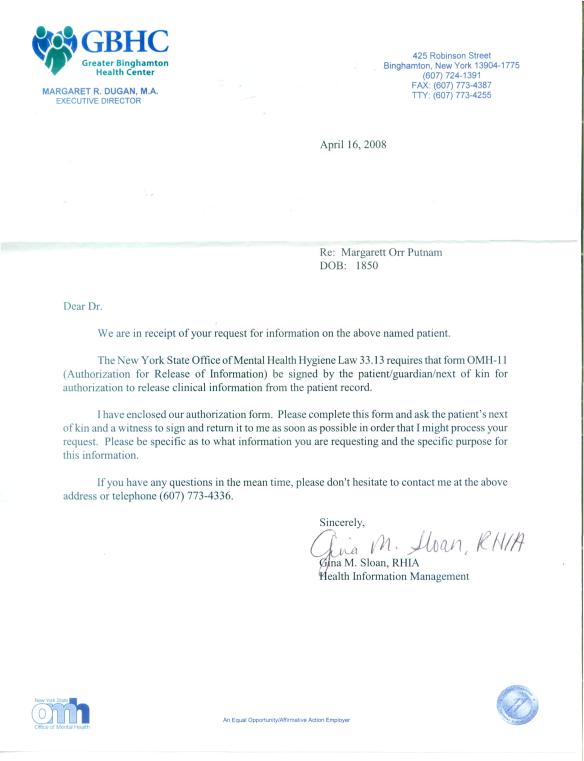
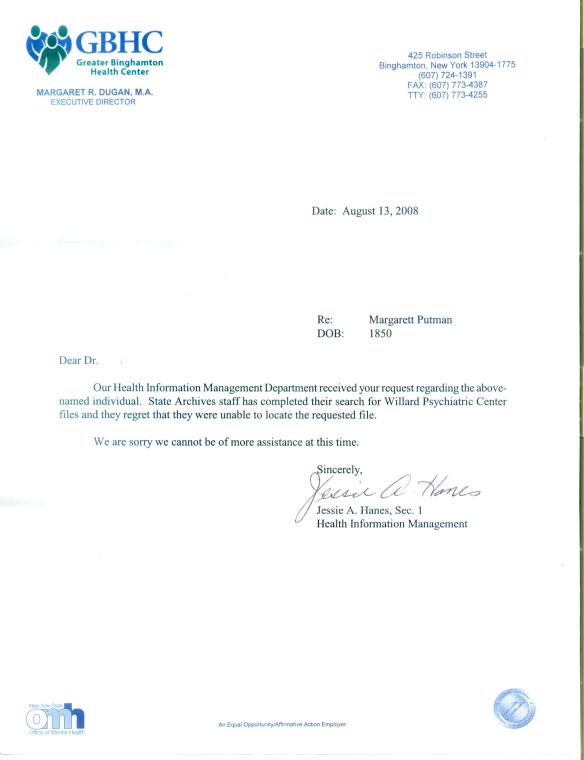
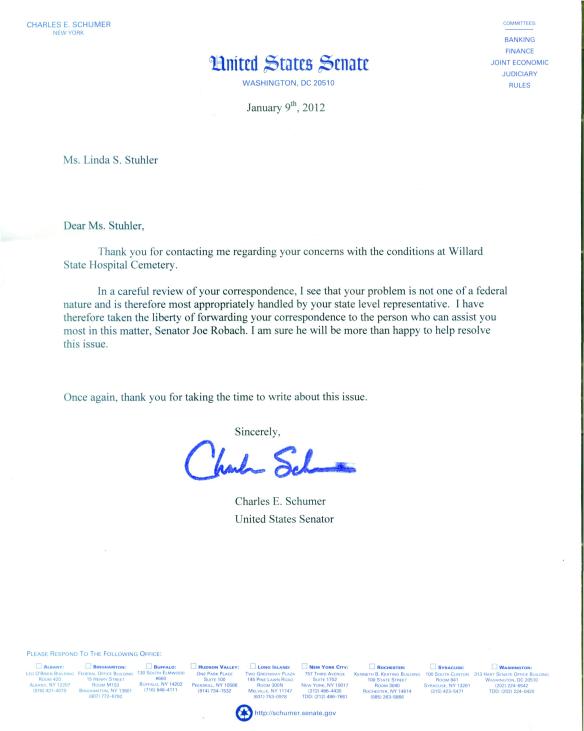
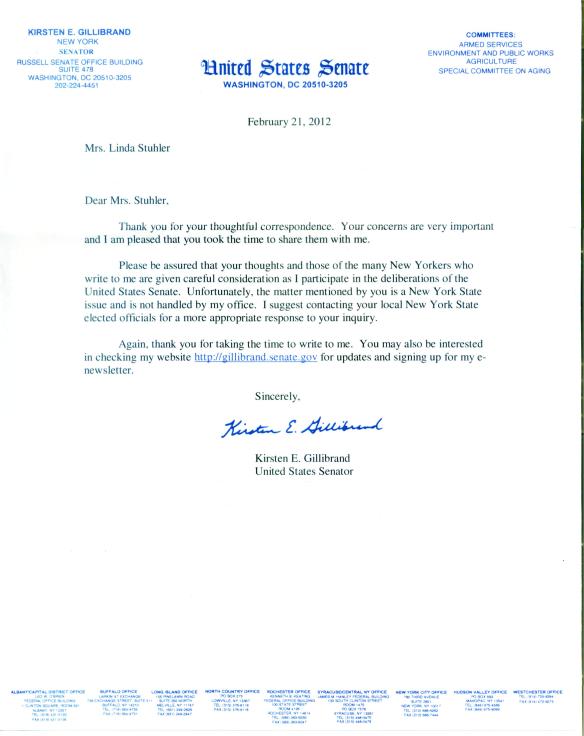
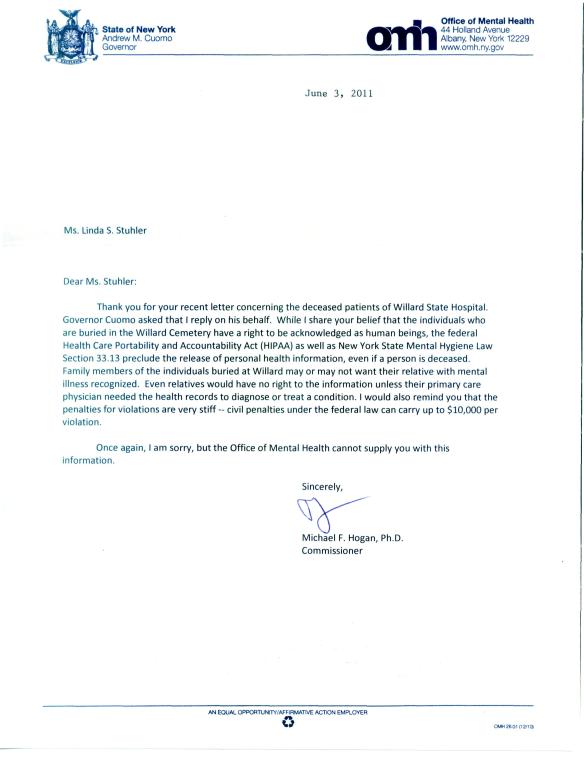
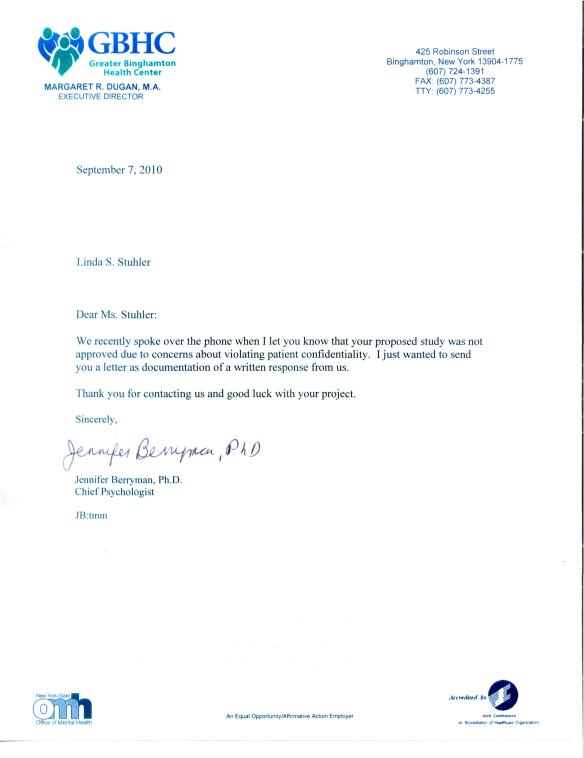
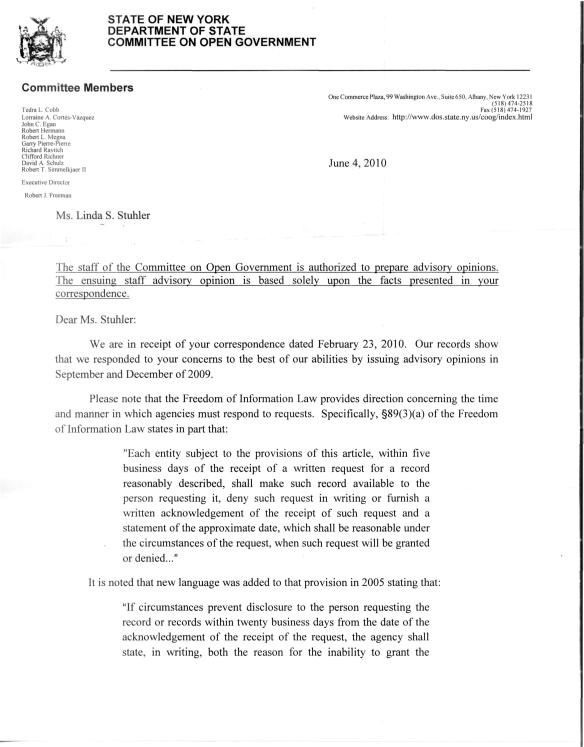
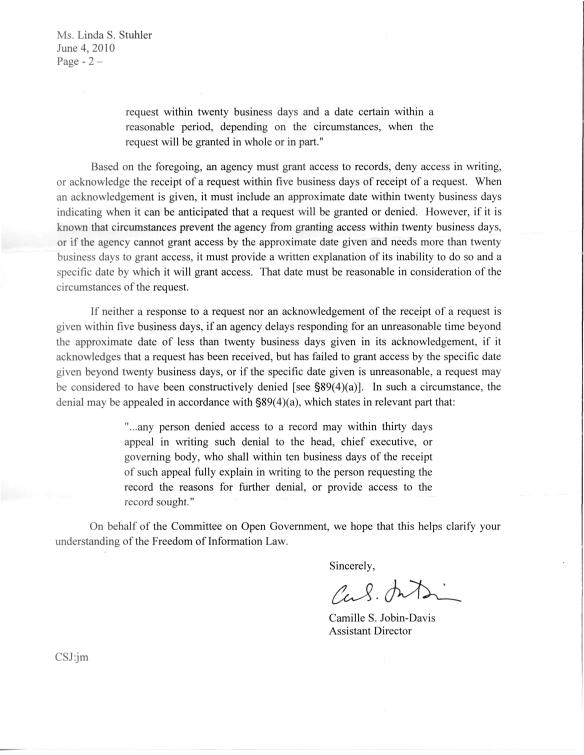
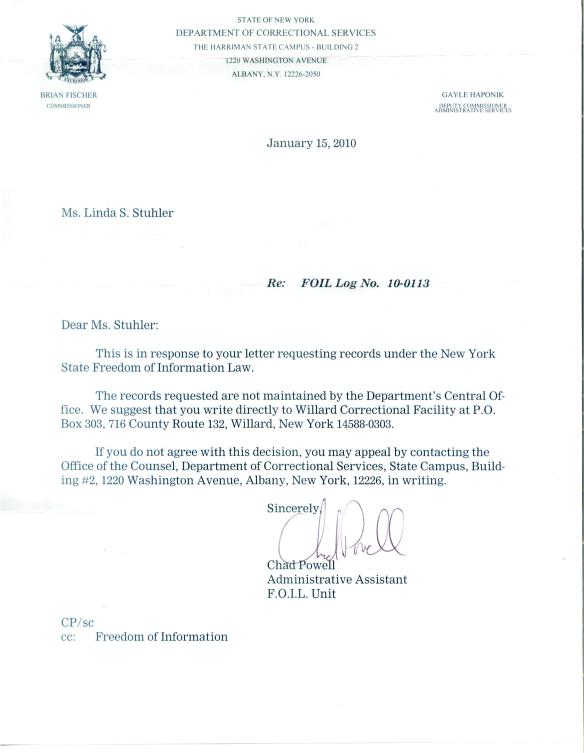
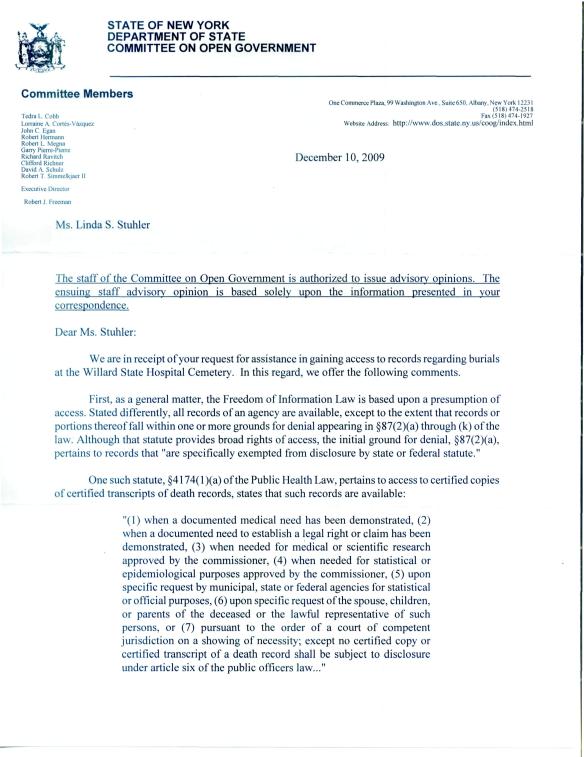
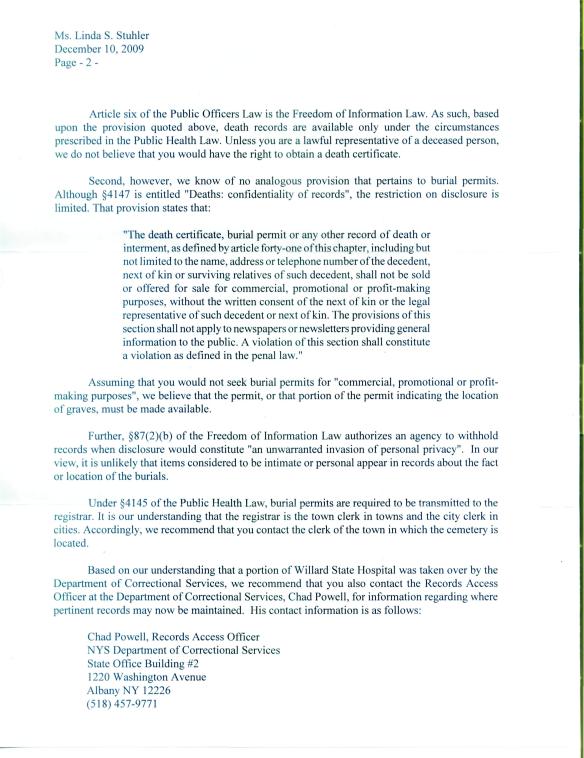
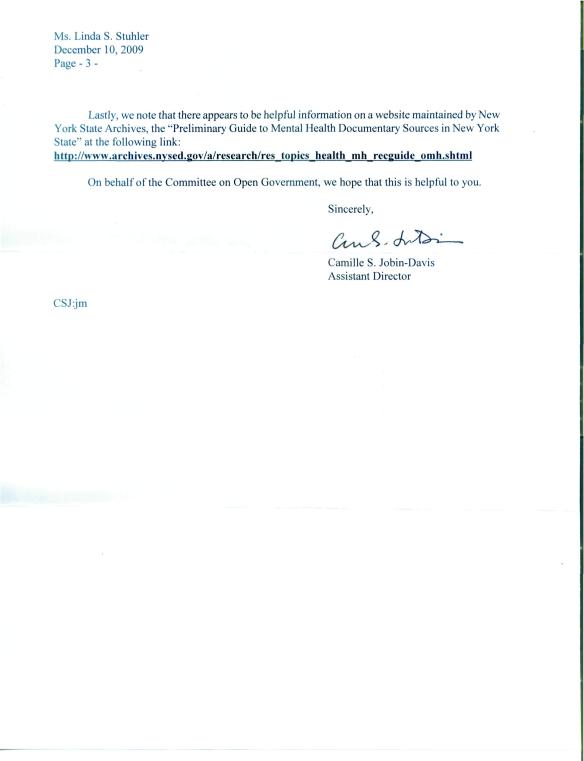
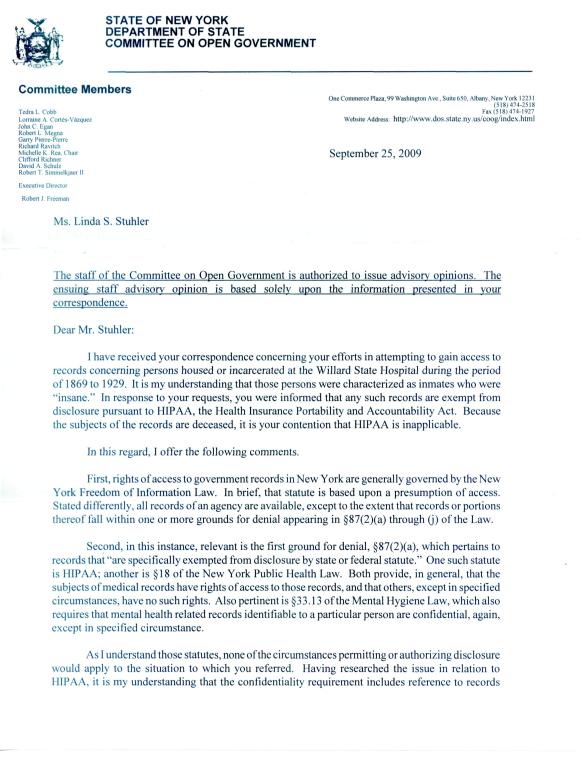
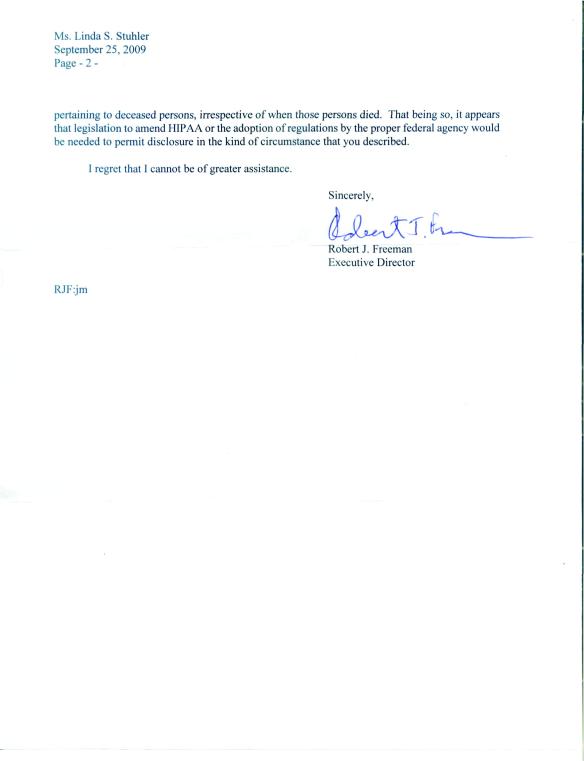
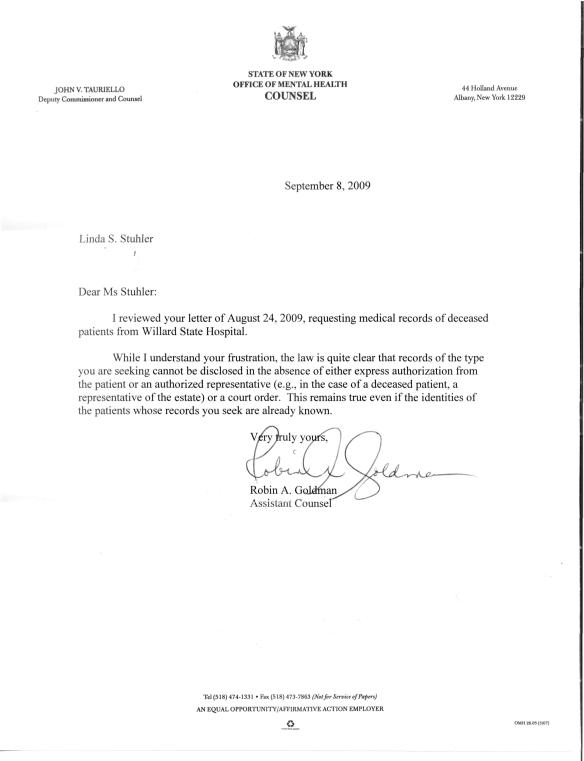
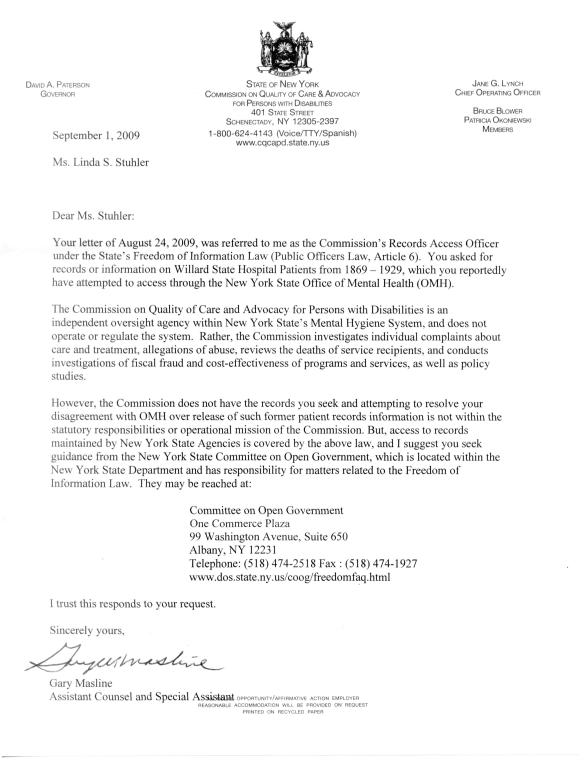
I continue to share your frustration. In two weeks it will have been twenty years since I embarked on my own journey – to locate the final resting place of my Great Aunt Sarah McMullen. My Aunt Sadie was hospitalized in the Buffalo State Hospital from 1891 – 1893 when she was released as “cured”. As a former mental health clinician, I understand the concerns related to patient confidentiality very well. As a former clinician with nearly twenty years working with children and families, I know how hard we worked to reunite families torn apart by the stigma of mental illness. My Great Aunt’s Discharge Summary (housed in the NYS Archives) likely holds the key to where my Aunt lived out her remaining days and yet OMH refuses to release this information 124 years after her release. To me OMH policy is beyond frustrating – it is outright cruel. I applaud your efforts with regard to Willard and I pray that one day the NYS Office of Mental Health will choose to do the right thing – the therapeutic thing – and release copies of mental health records to their descendants. I apologize if I have posted this before – its been twenty years now and absolutely nothing has changed.
LikeLike
The wife of my great grandfather’s brother was committed to Boloomingdale Asylum for three periods between 1847 and 1862. I was able to obtain a transcript of her admission and discharge records, including her diagnosis.
LikeLike
Dear James, Please let us know how you obtained the records.
LikeLike
I employed the assistance of state senators, etc., provided notarized documentation etc. Received multiple responses from OMH, and even had a conference call with OMH. Bottom line- they would not release over 50 year old records. That was over 2 years ago and I have given up.
LikeLike
As a child I grew up in Penn Yan. I sang in local church choir, around the holidays every year our church group would go to Willard to sing for the patients, I was both scared and heart broken. My mother has been doing our family tree, had found out that my fathers grandfather had also been commited to Willard and died there. To no avail just like your story she has had no luck obtaining any of his records, or a record of him ever being there even though family has stated so. On a final note before I moved out of state I worked at the Homestead,they had just finished building the 3rd wing which they called the psych wing. There were patients transfered in from all over the state, Willard, Rochester, Buffalo, NYC etc. I worked 3rd shift at night I would read the patients charts and clearly in most of them it would state misdiagnosed. I found back in the day you could have anyone commited for the pettiest reason. Now even if the most sane person has been locked away for years is going to take on those traits and become insane.
LikeLike
Thank you, Angie. Did you check the census on the “Names” page to see if he is listed? It’s pretty sad that we can’t find out what happened to our ancestors.
LikeLike
Wow. I can’t believe how difficult it is to get this information. This is bureaucracy at its ultimate. I admire your persistence. Good luck with your search for info.
LikeLike
I am about to embark on a similar journey of inevitable frustration concerning my great-grandfather’s almost forty-year stay in Manhattan State Hospital. I do not believe that the lack of compliance with our wishes has anything to do with concern for anyone’s privacy. It is my hunch – I can’t prove it, of course – my best guess, is that this is that the state is terrified if the records are made public and the instances of documented maltreatment and outright abuse are made public. The lawsuits that ensue would open up their worst nightmare, both financially and from a public relations perspective.
My hunch is a bit more than just some random opinion. I was a volunteer at Bellevue in Manhattan in the mid-70’s. I did an internship at Ypisilanti State Hospital in Michigan back in 1979. Also, as part of an MSW degree, I did an internship in a private psychiatric hospital and worked on an adult unit, a geriatric-psych unit, and a dementia ward. My first husband ran a department in a public mental institution in Ohio. I know what goes on in mental hospitals.
LikeLike
You may be right. I have thought of that as well but there were many people who did obtain the medical records prior to 1996 and did not sue. I just wanted them for myself so I could understand how and why she was committed. I also wanted her photographs. If you have any luck, please let me know! I will be scanning more response letters and posting them very soon. Thanks for reading and keep in touch! -Lin
LikeLike
I will keep in touch. I was frankly amazed to find your blog about my exact problem. I want my great-grandfather’s records for the same reasons you do. I also want to find the name of the town he came from in Europe, if possible. He is one of the few I have not been able to trace. I am also relentless when something stands in my way 🙂 -Dale
LikeLike
We aren’t the only ones with this problem. People all over the country are trying to get copies of their ancestors medical records. Maybe one day we will get some one in a position of power to help us out. I added more response letters today; I need to find all the emails. By the way, you can order a copy of your ancestor’s death certificate from the NYS Vital Records website. That may tell you what town he was born in. Good luck! -Lin
LikeLike